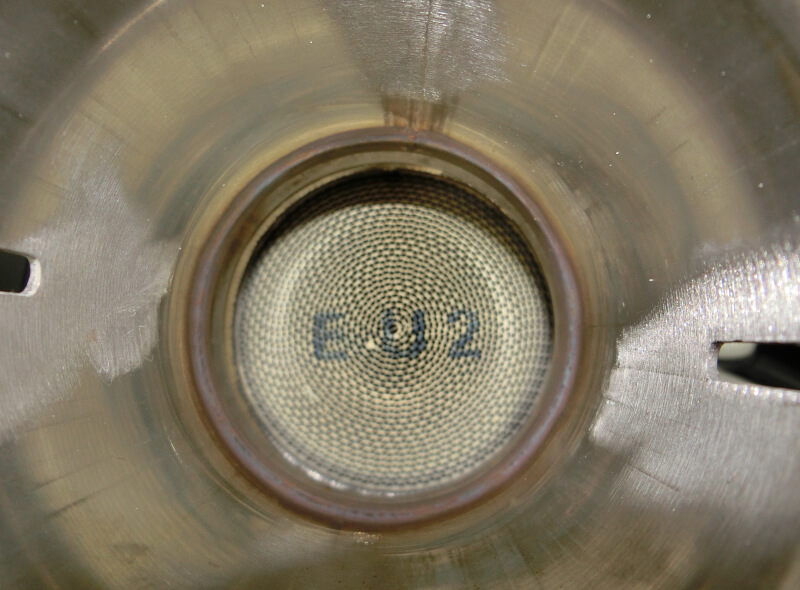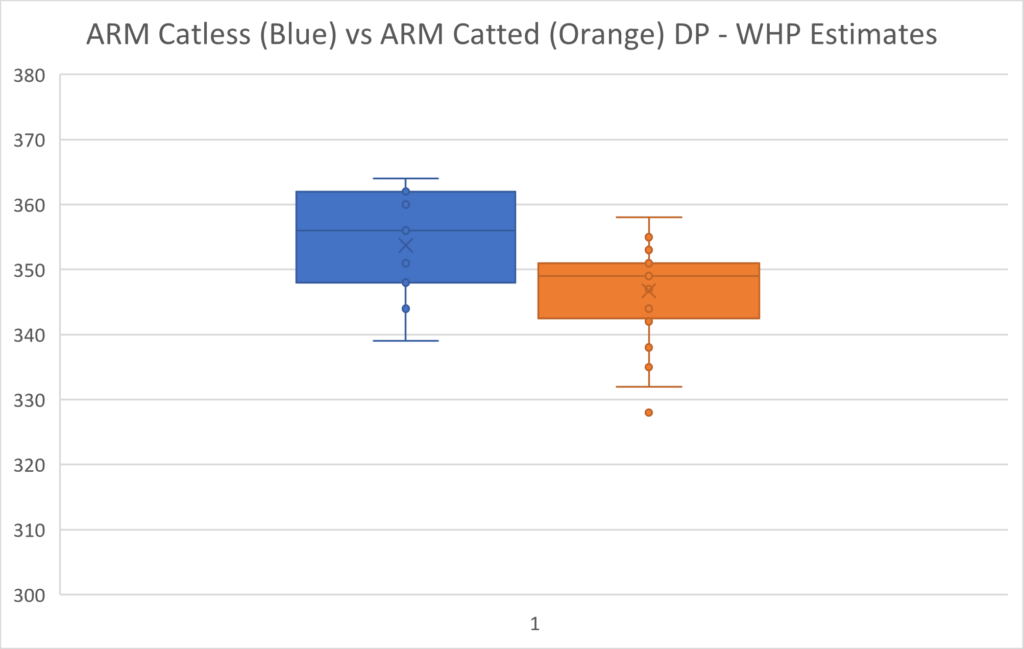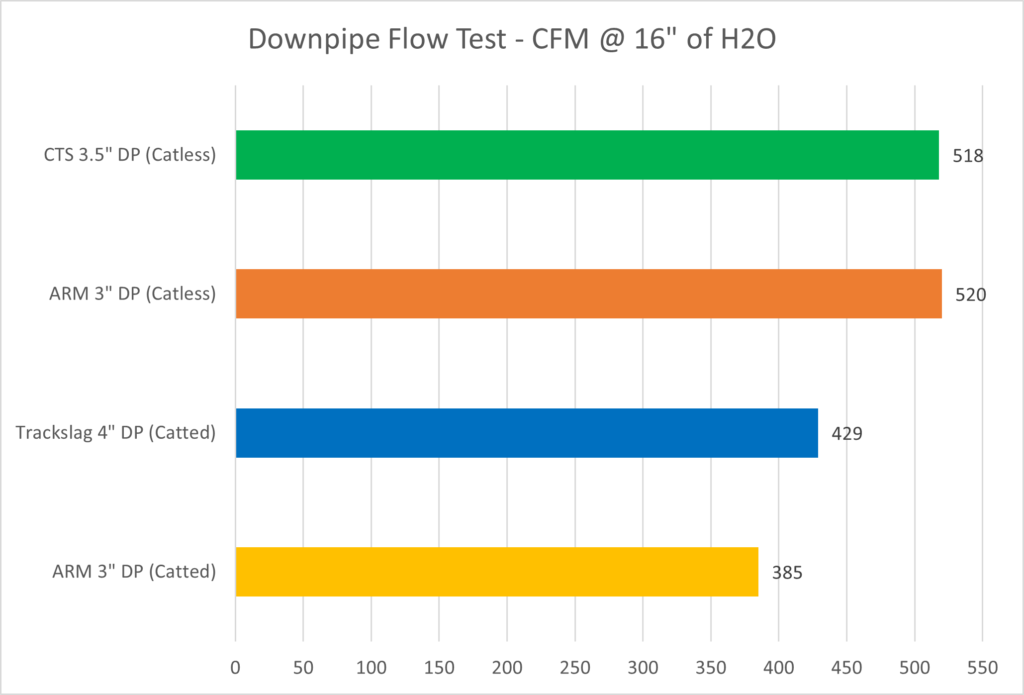Background:
A post made yesterday showed the results of a comparison of estimated power and torque when switching the downpipe on my GTI from an ARM Motorsport catless to Trackslag catted.

Some questions were asked about how the same downpipe brand would perform if the catted and catless versions were compared.
I have used the ARM Motorsports catted downpipe but did so approximately 6 months prior to ARM loaning me a catless downpipe, and at the time that I was using the catted version I was not anticipating the future use of the catless version.
Previously a comparison was done between the ARM catted downpipe and Trackslag catted downpipe. In that comparison, the Trackslag was shown to support a slightly faster acceleration time.
My hypothesis for the difference centers on the catalytic converter, primarily the cross-sectional area.

Relative to other attributes of an exhaust the catalytic converter looks to me to possibly be a significant factor contributing to pressure losses. The catalytic converter used with the Trackslag downpipe has a larger circumference than the ARM downpipe, 134 mm versus 104 mm.
The cross-sectional areas compare as shown in the drawing below:

With respect to pressure drop through the catalytic converter, all things being equal other than the cross-sectional area, the DP with the larger cross-section should generate less pressure drop.
Test Procedure:
The method of collecting data is the same as was described in the previous post. The GTI was operating with the same turbo and tune.
There was a difference in the intercooler setup. During the ARM catted downpipe data logging the GTI was equipped with a do88 intercooler in conjunction with a Majesty bicooler. During the catless runs, the IC setup was an IE V1 with the Majesty bicooler.
For both setups, the pressure drop average is around 1 psi maximum and the average IAT delta @ 6K RPM is about 10 degrees Fahrenheit. These are average values and there is some variation between the setups.
The ambient temperature during the catted downpipe data collection was approximately 10 degrees warmer than during the catless downpipe data collection, 82 F versus 72 F.
Maximum wheel horsepower is being calculated using Virtual Dyno.
Test Results:
A boxplot shows the summary of the recorded data:

Analyzing the data samples, 11 catless and 33 catted, with a t-Test:

With a significance level of 5%, meaning there’s a 5% chance the conclusion is incorrect, there is sufficient difference between the sample means to believe the ARM catless downpipe results in more wheel horsepower than the ARM catted downpipe. The difference in the sample means is 7 whp.
Conclusions:
Comparing Virtual Dyno generated peak wheel horsepower estimates using an ARM Motorsports catted downpipe and ARM Motorsports catless downpipe showed a 7 whp difference on average, to the advantage of the catless downpipe.
These results were obtained with a six-month gap between data collection and with slightly different hardware on the GTI, other than just the downpipes.
Environmental conditions were slightly different, with less favorable ambient temperatures recorded during the catted downpipe data collection.
This outcome differs from a similar previous post where a Trackslag catted downpipe was compared with the ARM catless downpipe.
Previous flow tests using these downpipes have shown that a catless downpipe supports higher airflow.
Hypothesis:
From these results, the next logical question would be, what result would occur if the Trackslag downpipe is compared to the same brand catless model?
Looking at the airflow measurements for the products that have been available:

I speculate that catless downpipes will top out around 525 CFM @ 16″ of H2O, based on the ARM and CTS catless downpipe measurements.
The ARM catless downpipe showed a 7 whp advantage over the catted version. (Although this value would likely be less if the ambient temperature was equal during data collection. The ambient temperature was 10 degrees Fahrenheit warmer when recording with the catted downpipe.)
The 7 whp gain corresponded to a 35% increase in airflow. “If” the airflow does top out around 525 CFM, the Trackslag catless downpipe would allow 22% more airflow versus the Trackslag catted version, and proportionally that would equate to an additional 4.4 whp.
Note: The wheel horsepower measurements were made with an IS38 turbocharger. Power changes may be larger or smaller depending on the exhaust flow rate of the turbocharger being used. Likely, a larger turbocharger would show a larger power differential.

Jeff,
Was there any significant change in sound between catless & high flow catted? Thanks!
I found the difference to be noticeable, with the catless DP being a bit louder.